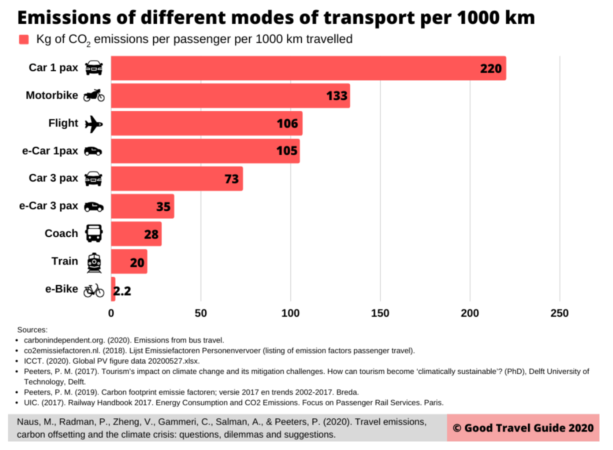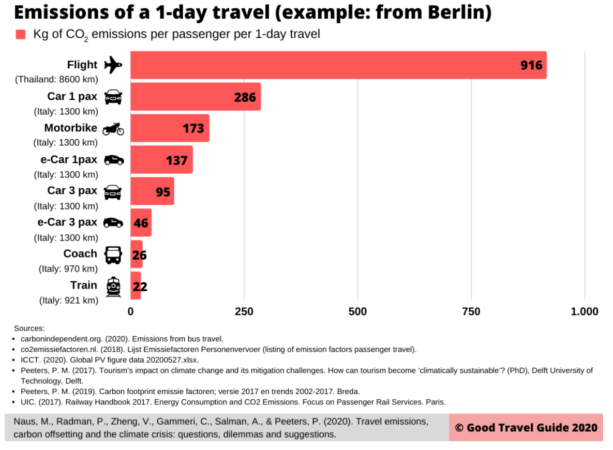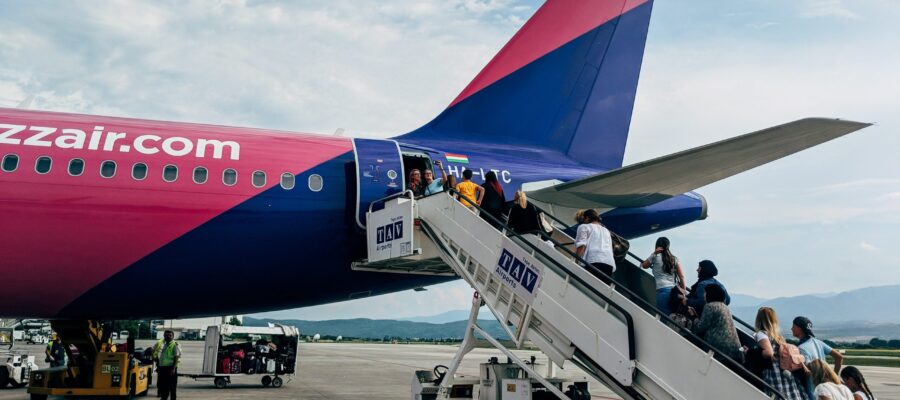© Good Travel Guide, December 2020 by Jaspal Channa & Paula Radman
When you buy a ticket to travel online, you might have noticed a little check box that offers you the chance to offset the CO2 emissions of your journey for a very small cost. It often involves planting a tree which can offset the CO2 your journey produces. Feels good, right? Guilt-free travel by paying someone else to remove the CO2 that your long or short haul journey produces. As travellers we are told that it’s a sustainable and responsible way to travel. But how effective are these programs really?
Myrthe Naus, Paula Radman, Valentine Zeng, Camilla Gammeri, Albert Salman and Paul Peeters have written an article addressing a number of key questions about travel emissions and carbon offsetting. The full article is available here, but here’s a summary of what you will find.
Will offsetting help tackle the climate crisis?
Carbon offset programs in the travel industry are based on the idea that the carbon emissions of a journey can be removed from the atmosphere by paying for an action or project, making the journey carbon neutral. But what impact do these programs really have in offsetting emissions and how far do they go in contributing to the Paris Agreement? The study found that 85 percent of offset projects have a high likelihood of overestimating their effectiveness (e.g. your trees will take up less carbon than expected or may even die soon) and not being additional (e.g. the wind turbines you just paid for was going to be erected anyway and did not need your money). Nevertheless, offset projects can be good and beneficial, but offering offsetting as a simple, cheap option to compensate for travel emissions is likely to continue business as usual, with no incentive for real change and with no serious contribution to the Paris Climate Agreement.
It might be possible to offset when you buy an air ticket, but the biggest source of CO2 emissions comes from driving your own car. Figure 1 below compares the different transport modes for going on holidays.

Figure 1: Greenhouse gas emissions of different transport modes per 1000 km (Copyright Good Travel Guide 2020)
With this in mind, if you really want to reduce your emissions then here’s a summary of what the experts of the article suggest you might want to do before you consider offsetting.
How can you really reduce your travel emissions?
Suggestion #1. Travel less often. With the increase of video conferencing and high speed internet, you might want to ask yourself if it’s really necessary to fly to the meeting or could it be done virtually. We all love a city break, but consider the best way to get there, 3 people in a car has less emissions than a flight.

Suggestion #2. Consider a more sustainable transport mode. Figure 1 shows the massive difference you can make regarding how much CO2 you emit on a trip depending on which travel mode you choose. Also, trains, buses and ferries can provide a more personal and enriching travel experience as part of the holiday, compared to budget flights. As they say, it’s about the journey not the destination, take your time soak in the scenery and make that part of the experience.
Suggestion #3. Consider travelling a shorter distance, by instead choosing to explore destinations closer to home. Figure 2 shows the difference in emissions between transport modes from the same amount of travel time. Based on the figures, it can be concluded that forty train trips from Berlin to Italy generate a similar amount of emissions as one flight from Berlin to Thailand only!

Figure 2: Greenhouse gas emissions of different transport modes for a 1-day travel (Copyright Good Travel Guide 2020).
Suggestion #4. Compare and reduce CO2 emissions. For flights you can use various websites to compare flight options, choose the one that is expected to have the lowest CO2 emissions.
Suggestion #5. When travelling by car, avoid SUVs. In case you opt for a car, use a car with a low emission, carpooling or a car-sharing company. When possible, choose an electric or hybrid car and avoid a SUV as they are a huge contributor to carbon emissions.
What can you do instead of offsetting?
So you’ve reduced your emissions, but how do you calculate and offset them?
Suggestion #6. Calculate your emissions. Online tools such as Atmosfair are available for this purpose, but take into account the differences in methodologies and the way results are presented.
Suggestion #7. Pay a fair price. We suggest that €100 per ton CO2 would be a reasonable amount, but of course it all depends on your own financial situation. You could donate to one of the options below.

Suggestion #8. Support a climate awareness campaign. There are many NGOs running climate awareness campaigns you can support, either through donations or by spreading the message on social media. Compared to the campaigns focussed on greenhouse gas reduction in general, e.g. by Friends of the Earth and Greenpeace, the Good Travel Guide awareness campaign is focussed on greenhouse gas reduction in the travel sector specifically.
Suggestion #9. Option for Europe – Make carbon emissions more expensive. You can do this by buying CO2 permits via Carbonkiller, which removes the permits from the EU Emissions Trading System, thereby driving the price up and reducing the amount of emissions that companies can make. For more on how this works, go to the full article.
Suggestion #10. Another option for Europe – Sign a petition (Fairosine) to ask the European Commission to start putting an end to the fuel tax exemptions in global aviation in order make fuel more expensive and for them to consider more green energy alternatives.
Green Destinations and the Good Travel Guide do not encourage you to stop travelling. However, we recommend you to travel with a purpose. It is argued that travellers bring benefits to local communities, especially in developing countries. That is true, but this is unfortunately a tiny fraction of international travellers. On the other hand, there is ample evidence that many people travel just because it’s cheap.
We hope that when planning your next trip you consider your climate impact as well as all the possibilities to reduce, compensate, or campaign against travel-induced emissions.
Interested to read more? Download the full article by clicking the button below.




